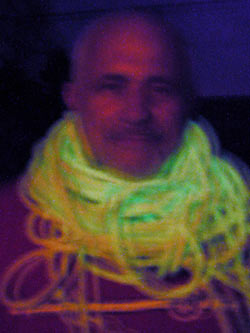|
EUROPEAN CETACEAN BYCATCH CAMPAIGN |
|
|
|
|
|
|
|
|
|
Dr. Norm Holy |
|
|
|
Invention |
|
Their entry is a clever combination of different ideas that could help marine mammals detect and avoid gillnets before coming into contact with them as well as allow them to escape unharmed if they still end up tangled in the net. To create avoidable, detectable, safer gear, the team tinkered with the chemical properties of ropes. |
|
Don King |
|
|
|
|
|
Holy, Trippel and King's gillnets consist of a single wall of netting that is injected with barium sulphate, which makes the netting stiffer less likely to tightly tangle around a fin, flipper or tail. Barium sulphate also makes the nets more acoustically detectable for whales, dolphins and porpoises that are using echolocation to find objects. The ropes they use for float lines are specially designed to be easily broken (under a force of 1,100 lbs) so large cetaceans can wrestle their way free. In order to keep cetaceans away from the floatlines in the first place, the team designed a glowing rope that may visually deter the animals. |

